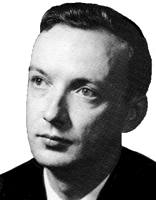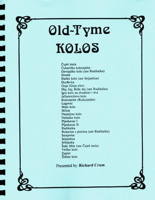
|
The Society of Folk Dance Historians (SFDH)
Old-Tyme Kolos
[
Home |
About |
Encyclopedia | CLICK AN IMAGE TO ENLARGE |

|
Information: A book.
Old-Tyme Kolos, Richard Crum, Los Angeles: 1993 Tamburitza Extravaganza, 1993.
These are a few dances done in the Croatian and Serbian communities of the eastern United States over a half-century period, from the beginnings of the "great economic immigration" in 1890 up to the "kolo revival" of the 1950's. The center of the revival was Pittsburgh, Pennsylvania – appropriately so, since that city was a long-time American stopping point for the early immigrants, and the headquarters of both the great United States and Croatian organization. The number of the old-time (pre-1950) kolos was not large – a few dozen – but they formed a sentimantal base-rock upon which kolo dancing later evolved. Their survival depended as much upon dedicated, kolo-loving tamburaši as it did upon the dancers.
Kolos have been done by the communities of Croatia and Serbia in the eastern United States over a half-century period, from the beginnings of the "great economic immigration" in 1890 up to the "kolo revival" of the 1950s. The center of the revival was Pittsburgh, Pennsylvania – appropriately so, because that city was a long-time American stopping point for the early immigrants, and the headquarters of both the great U.S. Croatian and Serbian organizations.
The '50s marked a number of important milestones in the evolution of kolo dancing in this country. For one thing, our ethnic communities were entering into the third and fourth American-born generations, who were beginning to take an interest in their cultural heritage – their "roots." One upshot of this was a revival of kolo dancing – it was the era of the Kolo Klubs, Kolo Contests, and the beginnings of the Junior Tamburitzans groups.
Secondly the post-war period saw a sudden proliferation of kolo recordings – 78-rpms that made the music readily available for kolo fans at classes and in their own basements. As soon as a recording for a new kolo came out, dancers were scrambling about searching out old-timers who might know how to do it.
Thirdly, the U.S. recreational folk dance movement, whose devotees enjoyed performing the dances of many different countries, became addicted to kolos, and soon Americans of all possible ethnic heritages were dancing Nebesko, Seljančica and Žikino, in large part because of the efforts of pioneering mediators such as Ivan "John" Filcich, to whom all of us who love kolos owe so much, Michael Herman, and Vyts Beliajus.
Fourthly, the Duquesne University Tamburitzans' first post-war tour to the "Old Country" in 1950 reopened the doors to the original sources, and many songs and dances hitherto unknown began flowing to the U.S. and freshening the old stream.
The number of the old-time (pre-1950) kolos was not large – a few dozen – but they formed a sentimental base-rock upon which kolo dancing later evolved. Their survival depended as much upon dedicated, kolo-loving tamburaši as it did upon the dancers.
CONTENTS
- Čuješ mala
- Čukaričko kokonješte
- Devojačko kolo (see Radikalka)
- Drmeš
- Djačko kolo (see Seljančica)
- Djurdjevka
- Goja (Goja ples)
- Haj, haj, Bože daj (see Radikalka)
- Igra kolo na dvadeset i dva
- Jeftanovićevo kolo
- Kokonješte (Kukunješće)
- Logovac
- Malo kolo
- Milica
- Natilijino kolo
- Nebesko kolo
- Pljeskavac I
- Plejeskavac II
- Radikalka
- Rukavice s prstima (see Radikalka)
- Sarajevka
- Seljančica
- Srbijanka
- Šušu Mile (see Čuješ mala)
- Veliko kolo
- Zaplet
- Žikino kolo
DOCUMENTS
- Croatia, a country.
- Dick Crum, an article.
- Serbia, a country.
- Tamburitza in History, an article.
This page © 2018 by Ron Houston.
Please do not copy any part of this page without including this copyright notice.
Please do not copy small portions out of context.
Please do not copy large portions without permission from Ron Houston.
